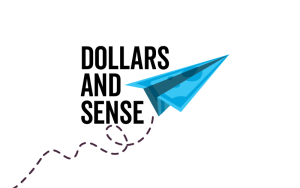Every few years, digital prophets emerge, citing algorithms and AI, to proclaim the imminent demise of print marketing. “Print is dead!” they declare with the enthusiasm of someone who just discovered the uncanny accuracy of predictive analytics. Yet, much like Mark Twain, print marketing could confidently respond, “The reports of my death are greatly exaggerated.”
In fact, not only is print marketing alive, but it is thriving. And it is a powerful complement to digital marketing, making the whole of the physical plus digital (“phygital”) combination greater than the sum of its parts. You may be reading this on a digital screen, but here’s why print marketing remains vibrantly alive in a world increasingly dominated by pixels.
Print Marketing’s Tangibility Touches Readers
We are bombarded by the digital world and its blue light trance, so the pure physicality of print marketing materials offers a refreshing tactile experience. Unlike emails that can be deleted with a single tap, or social media ads that vanish as quickly as they appear, print materials linger — both in the hand and the mind. They occupy real space, demanding attention simply by being strikingly present. Studies show people are more relaxed and open to the messaging while reading print. And a beautifully crafted brochure, a cleverly designed direct mail piece, or a unique business card doesn’t just convey information — it builds a lasting impression. Remember that exciting feeling of getting something unexpected in the mail?
Print marketing materials aren’t just read, they’re kept and often shared. The weight of the paper, the texture of the print, even the scent of the ink combine to create a multi-sensory experience that transcends purely digital campaigns.
Related: What Your Printer Needs for a Quote
Print Marketing’s Heft Fosters Trust and Credibility
By virtue of this old-school feel and the care taken to produce it, print marketing commands an elevated sense of credibility. A well-produced piece of print marketing signals that a company has invested time, money, and effort into reaching out to its audience. It’s a statement that says, “We’re serious about what we do.”
People also trust what they can see and hold in their hands. Often, the permanence of print feels more reliable than an online ad that can change with every refresh. In a time when clickbait and non-verified news sources can spoil your scroll, the solidity of print marketing materials offers a much-needed anchor of authenticity. It’s no wonder that industries that rely heavily on trust — like finance, healthcare, education, and various franchises — continue to invest in print.
Print Marketing Is Sticky
Let’s be honest—our digital attention spans are embarrassingly short. We scroll, we swipe, we double-tap, and then we move on to the next shiny thing. Print, on the other hand, encourages a different kind of engagement. When a person sits down with a magazine, a catalog, or even a well-designed postcard, they’re more likely to take their time. Print marketing materials foster a deeper connection with the reader because they don’t have to compete with pop-ups, autoplay videos, or notifications.
This undistracted engagement leads to better message retention. People are more likely to remember an ad they’ve seen in print than one they’ve encountered online. It’s the difference between glancing at a billboard on the highway and watching a documentary—you’re more likely to recall the one you spent time with. According to the Go Inspire Group, direct mail ads have a 17-day average lifespan, as opposed to email, which has just 1.5 hours, and social media, which has just minutes.
Additionally, large format print, like banners, posters, or window displays, can work seamlessly with digital campaigns to drive engagement and boost brand awareness. For example, a QR code on a large banner at a tradeshow can direct attendees to a landing page or social media promotion, merging physical and digital interactions. Recent studies show that combining print and digital ads will make online campaigns 400% more effective (Top Media Advertising, n.d.). By integrating print and digital strategies, brands can engage customers across multiple touchpoints, creating a cohesive experience that increases brand recognition and engagement.
Put Print to Work for a Winning Marketing Strategy
Savvy marketers know an effective campaign reaches all touchpoints along the buyer’s journey, harnessing the power of both print and digital marketing. While digital marketing is undeniably powerful, it’s not the whole story. Print marketing plays a crucial role in a comprehensive strategy, offering a unique set of strengths that digital alone can’t match.
Incorporating print into your marketing mix adds depth and breadth, creating a more robust and multi-faceted approach. The physical presence of print marketing materials reinforces your brand in tangible ways digital impressions can’t do alone, leaving a lasting impact that transcends the screen. Print marketing is also a strong vehicle for building trust and credibility with your audience, and it’s engaging, with great staying power.
So, while the tech gurus may continue to predict the demise of print, those in the know understand print marketing is not just surviving — it’s evolving, adapting, and thriving. As long as humans remain tactile creatures who crave connection and authenticity, print will continue to be an essential tool in the marketer’s arsenal.
Related: A Guide to Combining Traditional Print and Digital Marketing
Use Print to Bring New Life to Your Marketing
At Ironmark, we cut our teeth in the print marketing industry. As we recognized the incredible power of combining print plus digital, we became a “phygital” pioneer, and one of the leading agencies focused on this advanced approach. We can help you integrate both to master your marketing mix and also save time and money while avoiding the hassle of managing different media.
We know print marketing is very much alive. Use it to inject life into your phygital campaigns so that you can command attention, foster deeper connections, and lend credibility to your messaging. This vibrant force is most definitely not dead!




